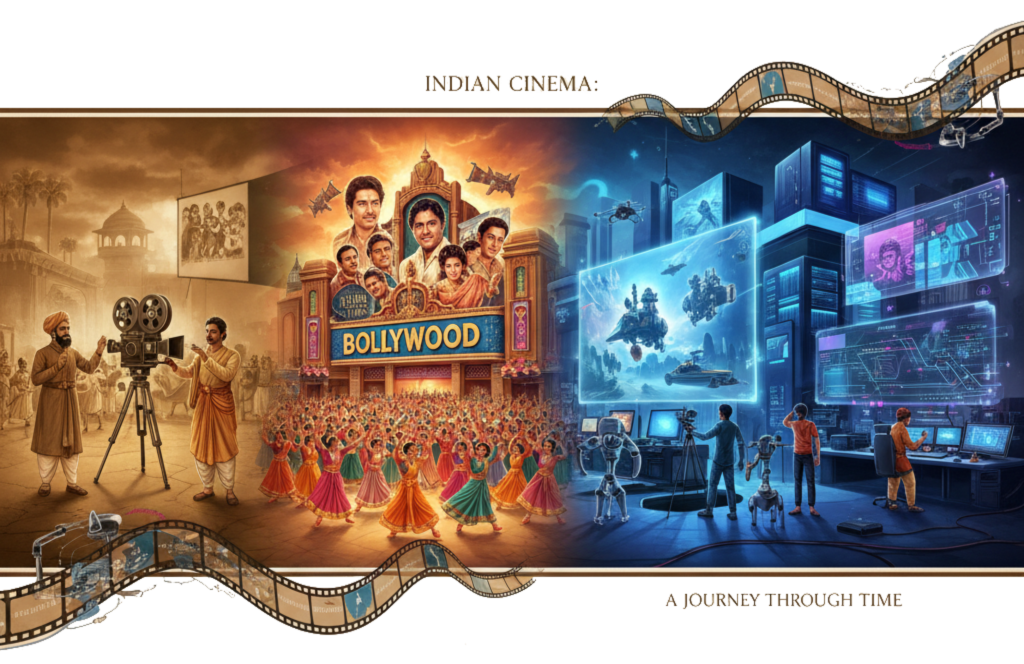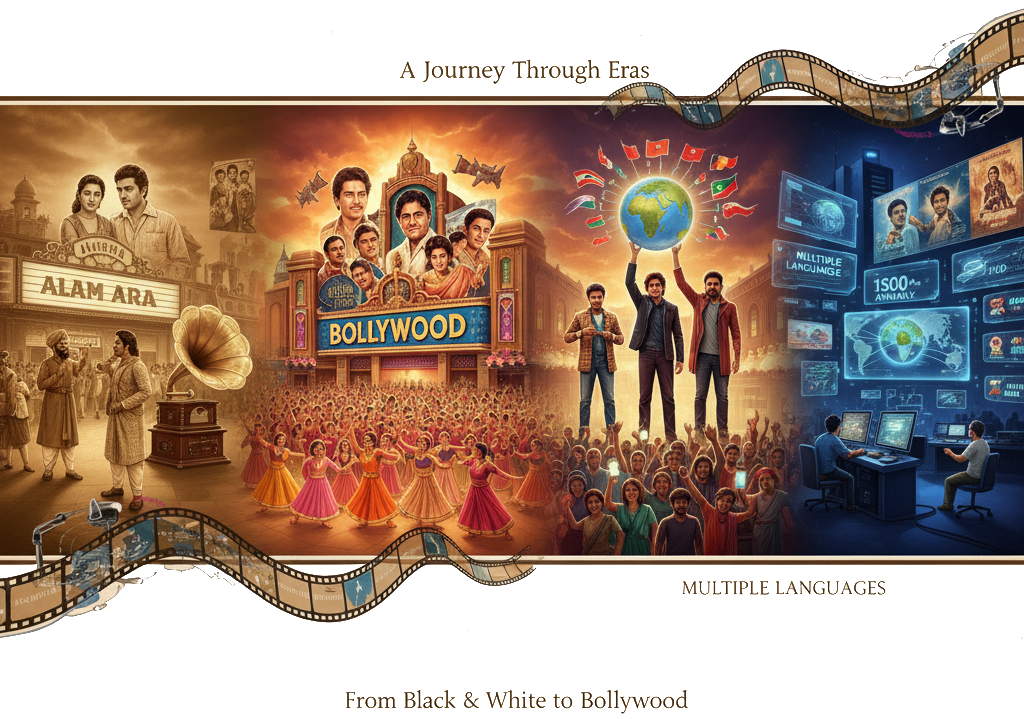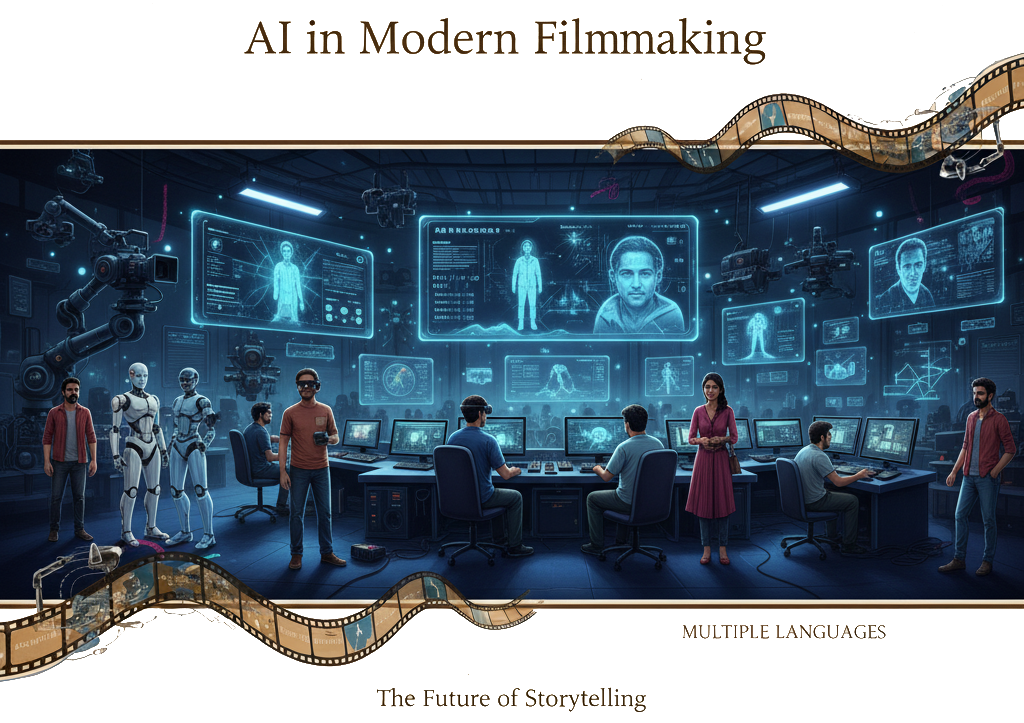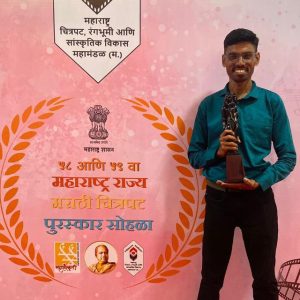Indian cinema is not just entertainment—it is a cultural treasure that has influenced generations across the globe. From the pioneering vision of Dadasaheb Phalke, known as the Father of Indian Cinema, to today’s high-tech world of AI-driven filmmaking, the journey of Indian cinema is nothing short of extraordinary.

🌟 The Beginning: Dadasaheb Phalke and Indian Cinema’s Birth
In 1913, Dadasaheb Phalke created India’s first full-length feature film, Raja Harishchandra. This silent film marked the foundation of the Indian film industry and introduced storytelling through moving images to India. Phalke’s passion, dedication, and innovative spirit laid the groundwork for what would become Bollywood, the world’s largest film industry.
🎞️ Growth of Indian Cinema: From Black & White to Bollywood
- 1930s–1950s: The Golden Age introduced sound films (Alam Ara), social dramas, and legendary actors like Raj Kapoor and Nargis.
- 1960s–1980s: Color cinema, musicals, and larger-than-life storytelling dominated. Bollywood became a cultural force worldwide.
- 1990s–2000s: With globalization, Indian cinema expanded globally with stars like Shah Rukh Khan, Aamir Khan, and Salman Khan.
Today, Indian cinema produces over 1,500 films annually in multiple languages, reaching audiences worldwide.

🚀 Modern Filmmaking: Technology Meets Creativity
Modern Indian filmmakers now have access to cutting-edge technology that blends creativity with innovation:
- VFX & CGI: High-quality visual effects compete with Hollywood standards (Baahubali, RRR).
- Digital Filmmaking: High-resolution cameras and drone shots enhance storytelling.
- OTT Platforms: Netflix, Amazon Prime, and Zee5 have created new opportunities for filmmakers.
🤖 AI in Modern Filmmaking
The newest revolution in cinema is Artificial Intelligence (AI). From script analysis, automated translations, voiceovers, and visual effects to audience behavior prediction, AI is transforming the way films are made.
Some examples:
- AI Scriptwriting: Helping writers create smarter storylines.
- AI VFX Tools: Reducing cost and time of heavy graphics.
- Voice Cloning & Dubbing: Breaking language barriers for global audiences.
- AI Editing Tools: Offering faster, more efficient post-production.
👉 AI is not replacing creativity but empowering filmmakers to create smarter, faster, and more engaging films.

🎥 Conclusion
From Dadasaheb Phalke’s simple camera to AI-powered filmmaking tools, the journey of Indian cinema reflects innovation, passion, and storytelling brilliance. As we step into the future, Indian cinema continues to inspire global audiences with its blend of tradition and technology.
At Magic Mouse Films, we proudly embrace this legacy while integrating modern filmmaking techniques and AI tools to deliver world-class film production services.

